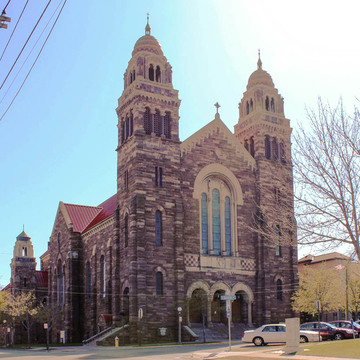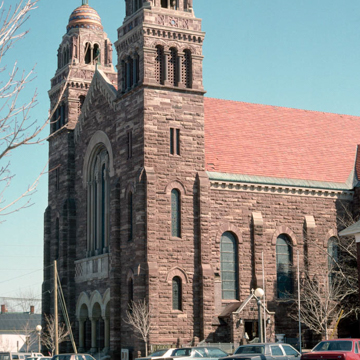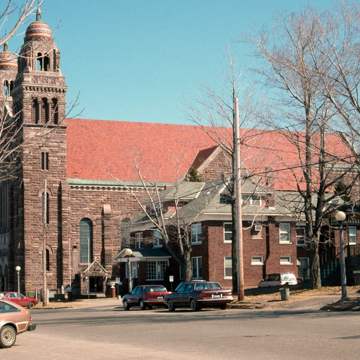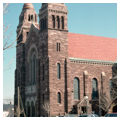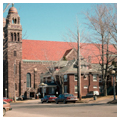The first St. Peter Cathedral, built in 1864 and itself Romanesque Revival, was destroyed by fire in 1879. The Diocese of Marquette replaced it with the present twin-towered church. Constructed of variegated Marquette brownstone, it took ten years to complete. Since no architect capable of creating a building of this magnitude and grandeur resided in the Upper Peninsula in the 1880s, the church was designed by a noted Milwaukee firm. Milwaukee was less than one day away by train on the Chicago and North Western Railroad, and had more of a commercial affinity with the towns of this region than did Detroit.
Triple arches mark the main entrance of the church. The plan has a single-aisled, barrel-vaulted nave and two small side aisles and short transepts. The church is profusely decorated with memorial cathedral glass windows from George A. Misch of Chicago and with woodwork from Hager and Johnson of Marquette. The cost and beauty of the church's material, its large size, and the elegance of its design and finish reflect the struggle of the Catholic Church, through the Diocese of Marquette, to establish its identity in a burgeoning youthful city on the American frontier.
In 1936, after a fire on November 3, 1935, the church was rebuilt extensively and enlarged. Schilling (1872–1952) of Detroit, who was born and raised in Ishpeming, specialized in church, school, and other institutional buildings. During the rebuilding the towers at the front corners of the church were topped with light blue and red domes surmounted with gold crosses, the nave was extended, and a bishop's chapel added. The Detroit Stained Glass Works fabricated some of the windows. An addition of 1999 links the church to the rectory that is now rehabilitated for parish offices and the Bishop's Room on the first floor. The priests continue to live upstairs. Dryvit panels on the exterior have obliterated the residential quality of the rectory.


